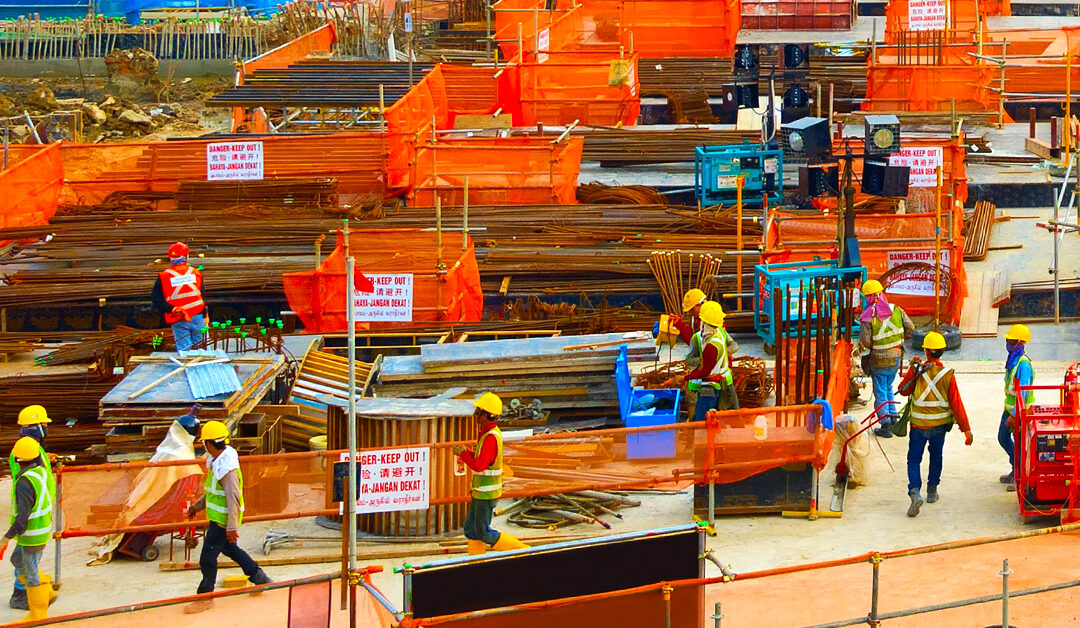Making sense of all of your data from all of your projects can feel like trying to understand a foreign language. But, when we break it down into steps, it starts to make a lot more sense.

- News
4 Reasons Why Construction Became So Litigious
The world has become gravely litigious, particularly in the commercial construction and real estate industries. If you are familiar with these industries, claims and litigation are inevitable risks on construction projects. While the projects and people involved may change, the issues and disputes surrounding construction projects are always consistent.
Let’s take a look at four reasons why construction became so litigious.
1. The Widespread Use of Subcontractors
About 40 years ago, general contractors (GCs) self-performed a lot of work of many different kinds, all under one roof. As such, it was in their best interest to be as efficient as possible. With GCs managing the trades internally, this process was feasible as all the goals of the trades were aligned with the GC’s goals, thanks to the umbrella.
This has since changed. Now, GCs manage several companies as they manage the construction of the work. No longer does the GC need to manage direct manpower efficiencies as long as nothing is delayed. If something does become delayed, they don’t bear the burden of the additional costs to combat inefficiencies. Meaning no longer do all stakeholders’ goals align because it went from all trades under one umbrella to many companies and no umbrellas. Each subcontractor has its own business with its own projects, causing its own problems.
2. Design
A poorly-coordinated design will inevitably create conflict, added costs, and delays resulting in conflicts from unexpected costs and timeline delays. To help alleviate these challenges, an accurate and complete design is critical for helping the construction process become less litigious.
When the contract is priced, it’s important to ensure the plans and specifications are detailed and complete. Otherwise, the contract sum may be an unrealistic, unreliable figure that is subject to change. The typical result? Claims for delays and impact damages. Furthermore, fast-track construction processes increase the risks of misunderstanding and litigation.
3. Lack of Project Data and Ability to Study It
Unfortunately, data analytics is not a strong point of the construction industry. This reality alone results in overruns and delays for obvious reasons. The lack of available information not only results in costly problems but also the lack of data analysis forces more arguments, which inevitably leads to disputes.
Without well-organized and properly formatted data, it’s difficult to “prove” compensation, resulting in disagreements and, yes, you guessed it, litigation. The thing that’s most frustrating is that the data is available. It’s just that most people in construction don’t have the time or know how to leverage it. If and when data analytics becomes the norm in construction, many common problems resulting in overruns will go away.
4. Heightened Competition in a Competitive Bidding World
From the beginning of time, humans have been builders and innovators. Fast forward thousands of years, and these things are still an integral part of our lives across all nations. It is big business, and with big business comes competition.
As a result, the competitive bidding process forces contractors to compete on price. The competitive culture in construction often has contractors making promises on cost and schedules that aren’t necessarily risk-adjusted to ensure that they win the bid.
This inevitability leads to cost overruns which, due to the reasons outlined above, can cause disputes.
It isn’t difficult to see why construction has become such a litigious industry. Each issue is tied to delays, impacts, and inefficiencies, and delays always seem to be the subject of discussion in any dispute.
The Solution?
Data. Data is the key to combating the widespread litigious epidemic in construction.
SmartPM Technologies, Inc. has created a completely automated software that analyzes data found in your construction schedule. This analysis will arm anyone with access to the schedule with everything they need to know to effectively control project schedules, budgets, and risks thereof. Contact us today to learn more.
RELATED STORIES

Making Construction Data Analytics Easier to Understand
Making sense of all of your data from all of your projects can feel like trying to understand a foreign language. But, when we break it down into steps, it starts to make a lot more sense.

Overcoming Confirmation Bias in Construction Project Management
Confirmation bias can be particularly problematic in project and schedule management, where decisions must be based on accurate and comprehensive information.

Top Construction Scheduling Software in 2023
SmartPM’s recognition as a top construction scheduling software in 2023 attests to the immense value in automated project controls.

Putting the ‘Smart’ in Project Management with Project Controls
Project controls are not just a subset of project management; they are its backbone, focusing on meticulous monitoring and analysis.
